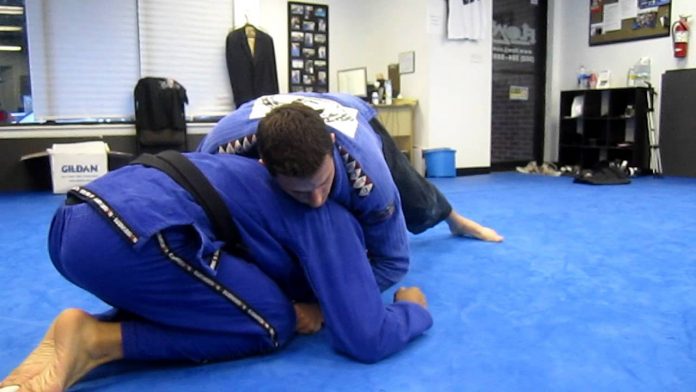
That pesky turtle position yet again. It seems people in all of the grappling martial arts have trouble with it. Judokas can safely stay there until the clock runs out. Wrestlers also turn to it when they need to make sure their backs stay off the mats. In BJJ, beating the turtle is actually not that hard. Granted, the position does present a challenge, particularly if you’re up against someone who can hold it actively. That said, BJJ turtle attacks are ample and you can freely take your pick. All it takes is knowing what to hunt for and the best spot to do it from.
Attacking the turtle can be a real nightmare, even against people who do not know a lot. If you’re up against a seasoned turtle master, you might just as well let them stand back up. Or should you? There are several BJJ turtle attacks that work perfectly out there. However, they’re pretty specific so you’ll need to understand a few turtle essentials first. These include the angel you’re attacking from, the position’s weak spots (yes they exist), and what to do in both Gi and No-Gi situations.
Turtle – An Annoying Judo Legacy
The exact origins of the turtle position are pretty hard to pinpoint. it is such an instinctive one that it is no wonder just about every grappling martial art uses it in some form. I first encountered it as a Judoka. Even then, it really troubled me a lot. I’m a bit rusty on Judo rules at the moment, but back then, we had a 20 second (or so) time limit to solve it. Not a lot of time to work, which is exactly why the position was so successful. Plus, there are a few tips and tricks to using your limbs to cover all the tiny spaces that Judokas master early on.
In BJJ, the turtle is actually much harder to deal with. That’s because it can very easily morph into an offensive position with very little repositioning. So, it is not just only the power defensive of the turtle position you need to deal with. Now you have to worry that you might end up on the run yourself. Stuff like the turtle guard is a real and present danger, not to mention all the surprise attacks.
So, when you’re looking for BJJ turtle attacks, you should make sure they cover all the bases. That means attacking with precision and efficiency, while not being vulnerable to sneaky counter-attacks. To that extent, what helped me the most was understanding where the turtle is most vulnerable. That, and a bunch of different BJJ turtle attacks that are widespread all over the opponent’s body.
Solving The Turtle Position
If there’s any position that actually needs solving in BJJ, after the closed guard, it has to be the turtle. Where do you start? At the front, like from a sprawl position, or from either side or from the back, as is most usual in Jiu-Jitsu? All of these are actually viable attacking spots if you know what you’re doing. And sadly, you can’t just go for the same thing from each one of them. Moreover, you need to understand that BJJ turtle attacks vary between positional and submission attacks.
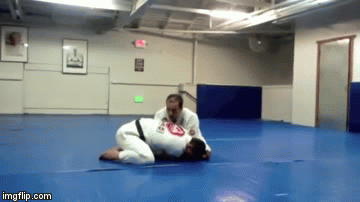
in terms of attacks, if you’re using the clock principle, your first choice is to get position attacks. Most often, you’ll end up getting side control towards the front, or back mount towards the back. Of course, it depends on your initial positioning. And, even if you don’t, you’ll create enough of an opening to launch a variety of submission attacks.
BJJ Turtle Attacks
Since we pretty much solved positional BJJ turtle attacks by sharing the clock principle, let’s head into several submissions attacks. As previously discussed, there are a plethora of moves there, ranging between different attacks. Plus there are some exclusively Gi or No-Gi moves to provide options for everyone. Just remember that you always have to use the clock to open up space for whichever attack you choose.
Lapel Nastiness
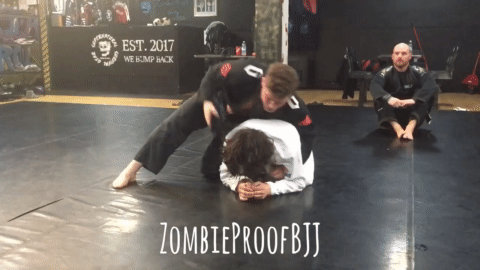
Sneaky Leg Lock
This one is a bit on the complicated side, but what will work. Plus, it is sort of legal, so you can do it both Gi and No-Gi. This is one to have in your toolbox for when other BJJ turtle attacks fail. One thing people forget to attack against the turtle are the legs. In fact, the feet are actually really exposed.
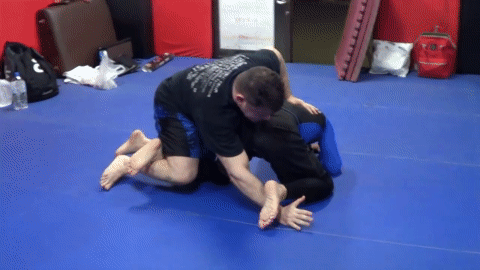
The Gerbi Choke
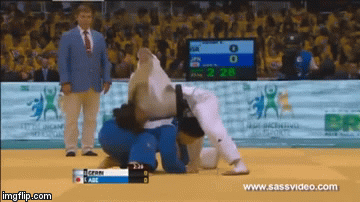
Unexpected Rear Triangle
Of course, we saved the best for last. This is the craziest of all the attacks, but also one that really works. One drawback is that it is much easier to do in NO-Gi than with the Gi. However, given the wealth of Gi-specific options above, it’s a perfect fit.
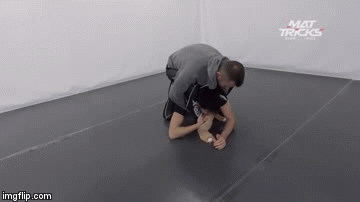
In Conclusion
The turtle position doesn’t have to be a nightmare when there are so many BJJ turtle attacks available. Just use the clock principle as your base, and you’ll have no trouble with it. It’ll be a breeze to either get a better position, like side control or the back, or a direct and very brutal tap via submissions. Give them a try and let us know what you think.


![Darce Choke Encyclopedia – Origins, Mechanics and Variations [2025] BJJ, choke, Brabo, BJJ Darce Choke, D'arce Choke, Darce BJJ Choke](https://bjj-world.com/wp-content/uploads/2017/11/JungPoirierLeeYahoo-218x150.jpg)










![Modernized Headquarters Passing Shawn Melanson DVD Review [2025] Modernized Headquarters Passing Shawn Melanson DVD Review](https://bjj-world.com/wp-content/uploads/2025/04/headquarters-passing-shawn-melanson-dvd-review-218x150.png)
![4 Weeks To A Better Guard Travis Stevens DVD Review [2025] 4 Weeks To A Better Guard Travis Stevens DVD Review](https://bjj-world.com/wp-content/uploads/2025/04/4-weeks-to-a-better-guard-travis-stevens-dvd-review-218x150.png)
![DONE! Gordon Ryan Retiring—and Danaher Might Not Be Far Behind! [2025] Gordon Ryan Retiring—and Danaher Might Not Be Far Behind!](https://bjj-world.com/wp-content/uploads/2025/04/LEG-GRABS-3-1-218x150.png)

![6 Most Essential Skills Base Top Dima Murovanni DVD Review [2025] 6 Most Essential Skills Base Top Dima Murovanni DVD Review](https://bjj-world.com/wp-content/uploads/2025/04/essential-skills-base-top-dima-murovanni-dvd-review-218x150.png)


![Mastering Control From Top Position Trent Hidlay DVD Review [2024] Mastering Control From Top Position Trent Hidlay DVD Review](https://bjj-world.com/wp-content/uploads/2024/11/control-from-top-position-trent-hidlay-dvd-review-100x70.png)
![Slay The Wrestle Up Guard Nick Rodriguez DVD Review [2024] Slay The Wrestle Up Guard Nick Rodriguez DVD Review](https://bjj-world.com/wp-content/uploads/2024/12/slay-the-wrestle-up-guard-nick-rodriguez-dvd-review-100x70.png)
![Feet Finder Foot Sweeps Christian Ozbek DVD Review [2024] Feet Finder Foot Sweeps Christian Ozbek DVD Review](https://bjj-world.com/wp-content/uploads/2024/09/feet-finder-foot-sweeps-christian-ozbek-dvd-review-100x70.png)
![Foot Sweep the World Dainis Nguyen-Huu DVD Review [2024] Foot Sweep the World Dainis Nguyen-Huu DVD Review](https://bjj-world.com/wp-content/uploads/2024/11/foot-sweep-the-world-dainis-nguyen-huu-dvd-review-100x70.png)


![Effectively Passing The Guard Luke Griffith DVD Review [2025] Effectively Passing The Guard Luke Griffith DVD Review](https://bjj-world.com/wp-content/uploads/2025/01/passing-the-guard-luke-griffith-dvd-review-100x70.png)



![Closet Closed Guard Craig Jones DVD Review [2025] Closet Closed Guard Craig Jones DVD Review](https://bjj-world.com/wp-content/uploads/2025/03/closet-closed-guard-craig-jones-dvd-review-100x70.png)


![Leg Locks From Beginner To Advanced Dan Manasoiu DVD Review [2024] Leg Locks From Beginner To Advanced Dan Manasoiu DVD Review](https://bjj-world.com/wp-content/uploads/2024/12/leg-locks-from-beginner-to-advanced-dan-manasoiu-dvd-review-100x70.png)
![Eoghan O’Flanagan Bundle Down Right Sloppy Jiu-Jitsu Review [2024] Eoghan O'Flanagan Bundle Down Right Sloppy Jiu-Jitsu Review 2024](https://bjj-world.com/wp-content/uploads/2024/09/down-right-sloppy-jiu-jitsu-eoghan-oflanagan-bundle-100x70.png)
![Systematically Attacking The Crucifix Gordon Ryan DVD Review [2024] Systematically Attacking The Crucifix Gordon Ryan DVD Review](https://bjj-world.com/wp-content/uploads/2024/10/systematically-attacking-the-crucifix-gordon-ryan-dvd-review-100x70.png)
![Position And Submission Escapes Craig Funk DVD Review [2025] Position And Submission Escapes Craig Funk DVD Review](https://bjj-world.com/wp-content/uploads/2025/02/position-and-submission-escapes-craig-funk-dvd-review-100x70.png)
![Just Pass Jay Rodriguez DVD Review [2024] Just Pass Jay Rodriguez DVD Review](https://bjj-world.com/wp-content/uploads/2024/11/just-pass-jay-rodriguez-dvd-review-100x70.png)
![360 Degrees Guard Retention Thiago Abud DVD Review [2024] 360 Degrees Guard Retention Thiago Abud DVD Review](https://bjj-world.com/wp-content/uploads/2024/10/360-degrees-guard-retention-thiago-abud-dvd-review-100x70.png)


![Advanced Immortal Clinch Matt Brown DVD Review [2024] Advanced Immortal Clinch Matt Brown DVD Review](https://bjj-world.com/wp-content/uploads/2024/09/advanced-immortal-clinch-matt-brown-dvd-review-100x70.png)
![Complete Front Headlock System Michael Pixley DVD Review [2024] Complete Front Headlock System Michael Pixley DVD Review](https://bjj-world.com/wp-content/uploads/2024/10/front-headlock-system-michael-pixley-dvd-review-100x70.png)

![Shoulder Lock Mastery Zach Green DVD Review [2025] Shoulder Lock Mastery Zach Green DVD Review](https://bjj-world.com/wp-content/uploads/2024/12/shoulder-lock-mastery-zach-green-dvd-review-100x70.png)